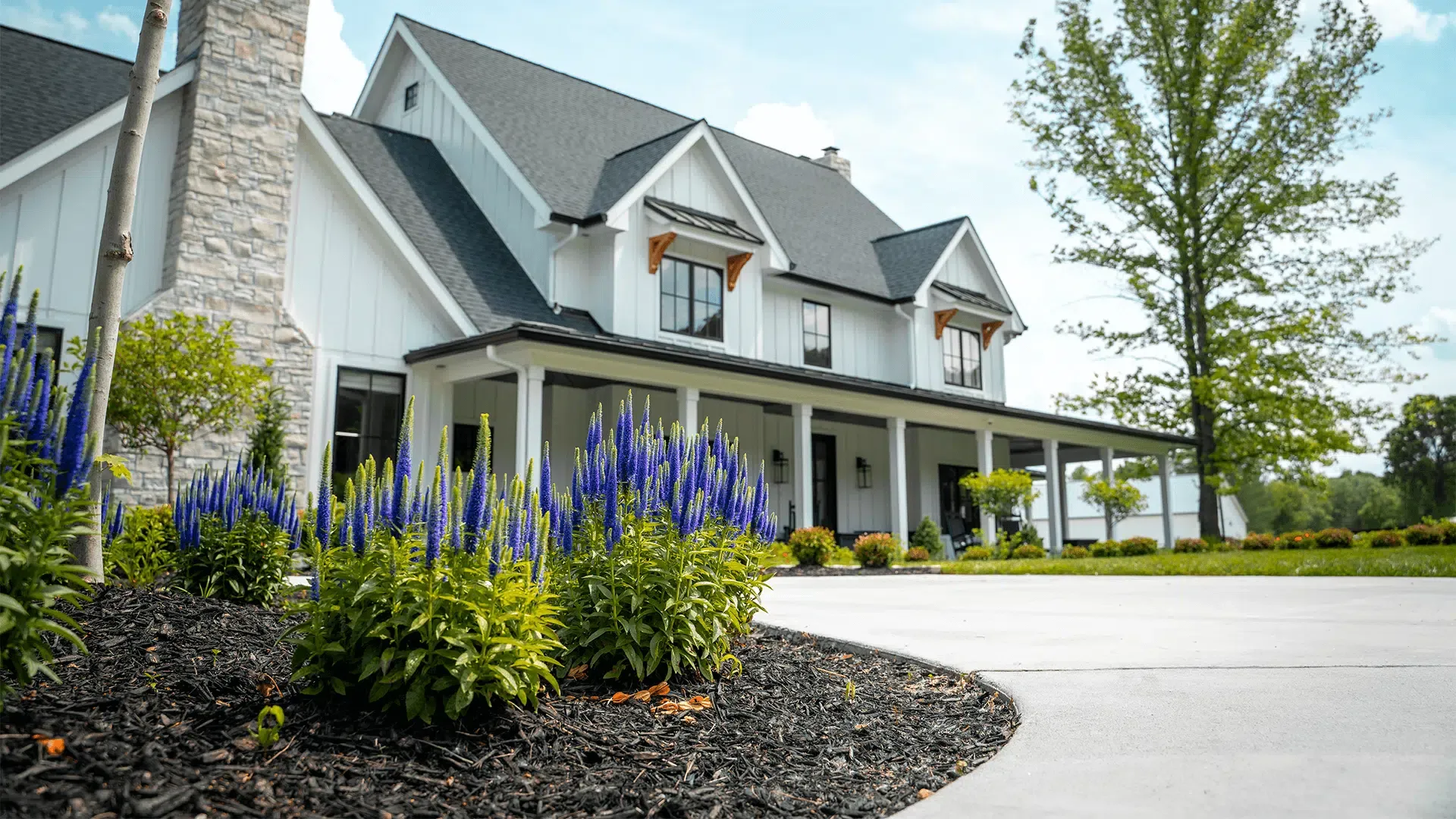The Benefits of Growing Native
Famed landscape architect, Ossian C. Simonds, once stated that “nature teaches [us] what to plant.” Ossian believed that the natural world surrounding an area should be the source of inspiration not only for form and function but for plant selection as well. Just by going out and seeing what trees, plants, and shrubs are growing in the neighboring woods can determine what types of plants will thrive in your yard.
The use of native plantings can be found in residential and commercial landscaping as well as highway projects, habitat restoration, storm-water management, parks, and even corporate offices. Missouri’s natural plant communities offer beautiful and diverse native plantings that have been adapting for thousands of years in our soil and through our weather conditions. From prairies, wetlands, river-bottom forests, glades, and upland savannas, Missouri’s native plants have adapted to nearly any condition that could be present in our very own yards.
The benefits of native planting are numerous, but we’ve compiled a list of the seven BEST reasons to grow natively in your yard. You’ll take in the views and breathe easier knowing you’ve chosen to let your yard be authentically itself!


1. Growing Native Provides a Sense of Space


Take a weekend drive through Missouri’s Mark Twain National Forest and you will be greeted with a sprawling 1.5 million acre natural retreat chock-full of Missouri native plants and animals, some of which are only found in Mark Twain National Forest.
Not only do places create a sense of home but plants can, as well. Colorado is synonymous with the blue spruce while Missouri is home to the renowned flowering dogwood. The flowering dogwood’s blossoms and berries have made their mark in the hearts of so many Missouri residents, leading it to be Missouri’s state tree.


Identifying the native plants of Missouri gives us a sense of ownership, belonging, and pride. By planting and promoting native plants of Missouri, we strengthen and bolster the very things that make Missouri unique and beautiful.
2. Growing Native Provides Unmatched Beautification


The flowering dogwood is undeniably beautiful, but it’s not the only beauty that Missouri has to offer. It is full of wildflowers, flowering vines, shrubs, and trees that offer a wide range of colors, textures, and forms to create dynamic seasonal displays.
Native prairie grasses and sedges have interesting flowers and seed heads that range from yellow to orange to a blazing coppery sheen. Trees and shrubs have amazing fall colors, and berries that persist well into the winter provide a food source to wildlife. A wide variety of plants ensures seasonal interest with the added bonus of attracting colorful birds, butterflies, and insects.
3. Growing Native Helps with Stormwater Management


This quiet trend is becoming more and more prevalent as urban sprawl continues to encroach into the wild areas of Missouri. Rain gardens, bioretention, and wetland detention basins are a few best management practices currently in use.
Rather than simply channel water further down the proverbial road, these management practices slow down and absorb rainwater, thereby reducing the quantity and velocity of stormwater runoff. But that’s not all! It also improves our water quality. Water-loving plants have deep roots that filter water as it percolates down through the soil. Improving and protecting our natural water sources and underground aquifers not only benefits the natural world but helps protect our drinking and irrigation water supply.
This is a growing native option you can feel great about!
4. Growing Native Helps with Erosion Control


Siltation, a process by which water becomes dirty as a result of fine mineral particles or soil in the water, is a main source of water pollution. Eroding hillsides and embankments inundate our creeks, streams, and rivers with soil and sediment. Soil loss can be reduced by using plants with strong, deep roots in place of turf grass, rock, or concrete. Turf grass has a very shallow root system and is rather ineffective when it comes to soil stability.
Native prairie-type grasses can generate root systems that dive up to 14 feet deep. Native plants hold the soil, absorb water, and slow the flow of water over the surface. Replacing turf with native plantings is an effective way of controlling erosion.
5. Growing Native Provides a Wildlife Habitat


A native plant garden with a diversity of trees, shrubs, perennials, and grasses provides food and shelter for insects, birds, amphibians, and mammals throughout the growing season. Leaving seed heads and the plant structure in place throughout the winter provides continuing food and shelter for countless creatures. It also provides opportunities to observe nature up close.
Rather than spending hundreds of dollars each year buying wild bird seed, you can provide a native and natural garden that offers year-round residency for your wild guests, as well as migrating birds. Also, by providing a natural habitat for wildlife you can deter these same animals from encroaching on your prized hydrangea or hosta garden.
6. Growing Native Helps with Deer Resistance


Native plantings and deer resistance don’t always seem to go together but there are many native plants that deer simply avoid. Deer rely on their sense of smell to determine if an area is safe and which plants are desirable to eat. For example, plants with aromatic foliage such as wild bergamot (Monarda fistulosa) and round-leaved groundsel (Senecio obovatus) deter deer.
Some plants repel deer altogether because of their coarse, rough, hairy, or spiny texture – such as rattlesnake master (Eryngium yuccifolium) and prickly pear cactus (Opuntia humifusa). A deer-resistant garden will include a high percentage of these types of plants. Check out my blog on deer-resistant planting techniques for more information and ideas.
7. Growing Native Equals Low-Maintenance!


Unlike lawns and mulched trees, shrubs, and perennial plant beds, landscapes planted with appropriate native plants require far less maintenance. They will require minimal water (except during establishment and during periods of extreme drought), and they also require little to no chemical fertilizers or pesticides.
Native plantings share many of the characteristics desired in low-maintenance landscapes such as longevity, seasonal interest, and tolerance of variable conditions, along with being small and compact. Plants that grow in groupings, rather than in individual manicured spaces, will eliminate weeds by preventing their growth in the first place.
Growing Native Offers the Best Retreat
There are a multitude of things you should consider when planning a native landscape. Before you begin planning, think about what you want the landscape to do for you:
✔️ Do you want to reduce the time and money you spend mowing a large expanse of turf?
✔️ Do you want to reduce the expense of planting annual flower beds?
✔️ Is there an eroding slope or a shaded area where traditional turf simply won’t grow?
Consider that the average turf maintenance cost per acre is about $1,000 whereas the average annual maintenance cost of prairie per acre is around $200. This is not to say that native landscaping is without cost or maintenance.
The proper establishment of native prairie or native landscaping will require a fair amount of planning, research, and consideration and, at a minimum, annual maintenance. Most prairie restoration is a 3 to 5-year commitment to establish a self-sustaining habitat. The payoff, however, is invaluable when considering the long-term cost-benefit and the overall benefit to our local wild environment.
Native planting is a passion of Elevate Outdoor. From the original design plan (with me!) to the implementation of the design through our hardworking team, you are going to LOVE the peace and tranquility that growing native offers! Did you know we provide free quotes? One of our knowledgeable salespeople will come to meet with you, evaluate your yard and vision, make suggestions, and create a quote for you to review. Submit your request here, and our customer service team will be in touch with you soon!









